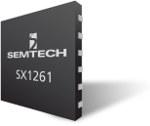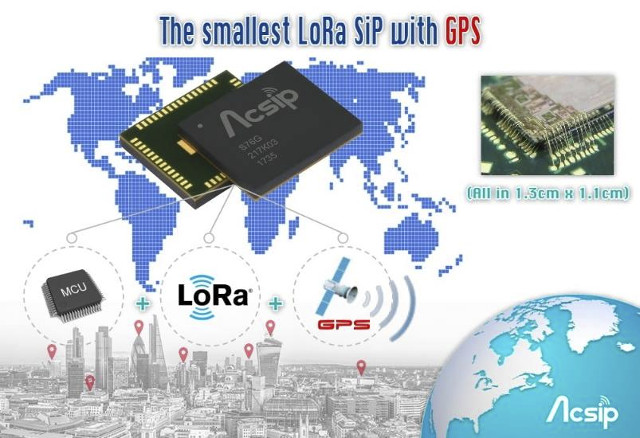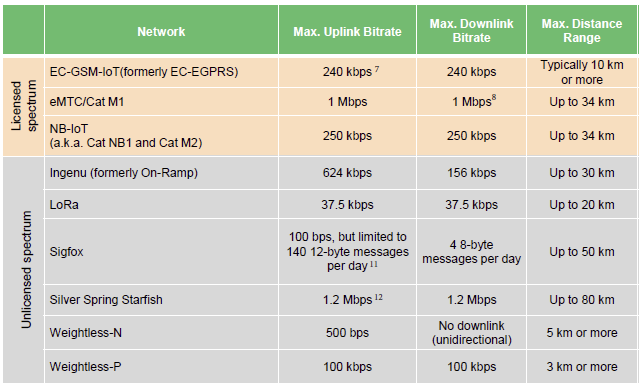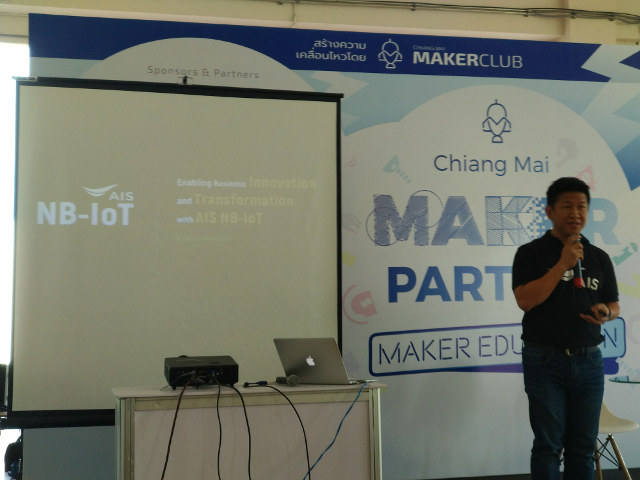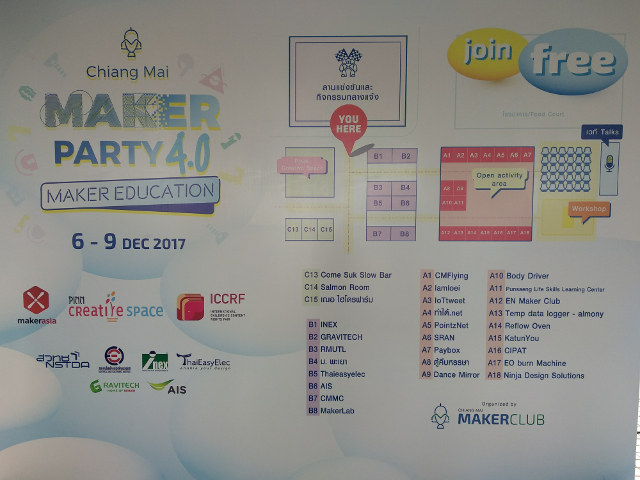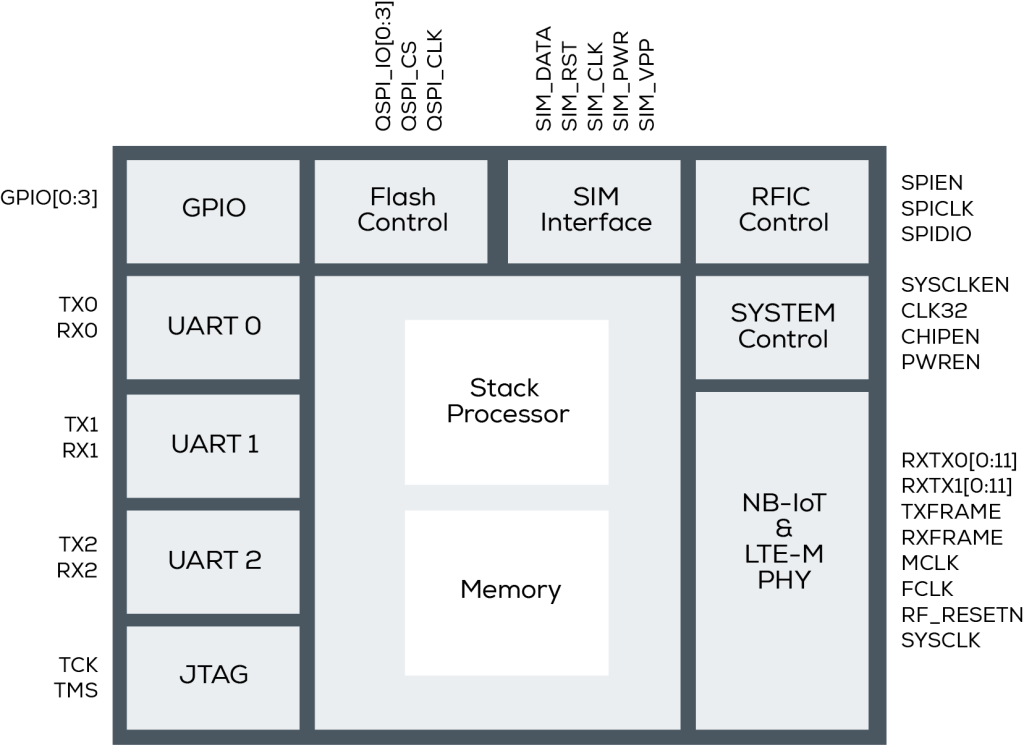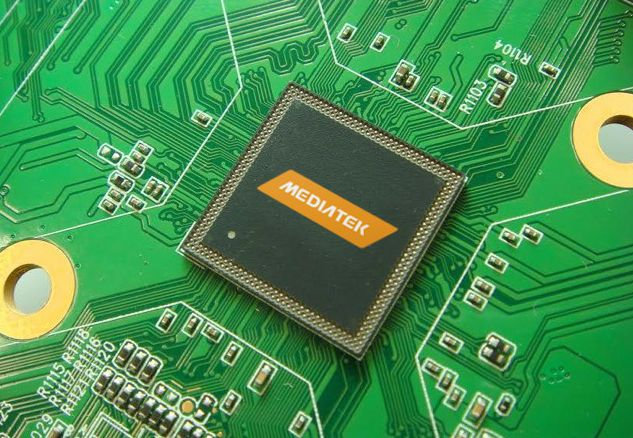LoRa is one of the most popular LPWAN technology deployed around the world with chips made by Semtech, as it allow long range, low power communication at low bitrate, and is especially useful for asset tracking, smart parking, and all sort of remote monitoring of persons (e.g. elderly fall for seniors) or assets (e.g. leak detection). Depending on your applications, i.e. data size and update frequency, a coin cell battery can last up to 10 years The company has now introduced the second generation LoRa technology with three new RF chips that are 45% smaller, reduce power consumption by 50% (4.5 mA) , and extend range by 20%. The new chips also offers a high-power transmit option (+22 dBm), supports FSK modulation for migration to LoRaWAN from legacy protocols, and includes a new spreading factor for dense networks. Full list of new features listed by the company: 50% less power […]
AcSiP S76G/S78G SiPs Integrate LoRa, GPS, and MCU into a Single 1.3×1.1 cm Package
LoRa has been combined with GPS in several products such as Rakwireless RAK811 LoRa tracker board, or Dragino LoRa/GPS HAT board among others, with all designed for far based on a LoRa module, plus a GPS module. LoRa GPS tracker will soon even smaller as AcSiP has developed S76G and S78G systems-in-package (SiP) that combine LoRa, GPS and an MCU into a single 1.1 x 1.3cm package. The two new modules are not listed on the company’s IoT-LoRa products page yet, but they appear to be an evolution of their S76S / S78S LoRa + MCU SiP released in 2016, so the new modules should have the following features: MCU – STMicro STM32L073x Arm Cortex M0+ MCU with up to 192 KB of Flash memory and 20 KB of RAM LoRa AcSiP S76G – Semtech SX1276 supporting global 868 MHz or 915 MHz ISM-Bands. AcSiP S78G – Semtech SX1278 supporting […]
Year 2017 in Review, Top 10 Posts, and Some Fun Stats
2017 is coming to an end, and as I do every year, I’ll take a look back at the year that was on CNX Software. The pace of development boards launches has not slowed down this year, and we get an even wider range from the low-end with Orange Pi or NanoPi boards, to much more powerful ARM boards, and some new entrants like Libre Computer. The same is true for TV boxes, most of which now support 4K HDR, ranging from ultra cheap models selling for less than $20 to higher end Android TV boxes, while mini PCs were dominated by Intel Apollo Lake models, although some Cherry Trail products were also launched. Processor-wise, Amlogic launched more Amlogic S905X derivatives with S905W/S905D/S905Z, which are popular in the TV box market. Rockchip’s most interesting processor this year was RK3328 quad core Cortex A53 processor designed for 4K HDR Android TV […]
LoRaWAN Currently Leads LPWAN IoT Gateway Deployments Says VDC Research
LoRaWAN, Sigfox, Weightless, RPMA, NB-IoT, etc… There are many LPWAN (Low Power Wide Area Networks) solutions, but it’s unclear whether most/all will survive and coexist, or there will eventually be a couple of winners used by everyone. VDC Research is claiming that so far, LoRaWan assumes LPWAN leadership for IoT gateways, explaining that “LoRaWAN (LoRa) has generated considerable traction with new product launches from a number of gateway suppliers through the past 18 months”, but points to mounting competition from 3GPP standards such as NB-IoT and LTE Cat M1. Sadly, the company did not provides number in their public announcement, and those are only available in the paid report. VDC Research still released a public executive brief (free registration required), with some of the highlights including: The global market for IoT gateway hardware is forecasted to grow to more than $2.5B in 2021. While intelligent gateways generated more market revenue […]
NB-IoT Overview, Technical Presentation, and Getting Started (in Thailand)
As I mentioned in my post yesterday I attended a talk about NB-IoT at Chiang Mai Maker Party 4.0 (2017). It was presented by representatives from AIS, a large telco company in Thailand, and I’ll give a summary of what I learned beside that Xiaomi Mi A1 camera is not that good after all, and I should have taken my DSLR camera with me instead. So apologies for the poor quality of some of the photos… The talk started from a higher level, including marketing / business propositions, and has time passed it become more and more technical. The first part of talk was presented by Phuchong Charoensuk, IoT marketing specialist at AIS, and he provided some more details about the company, and their current B2B IoT/M2M market (400,000 subscribers), before providing an overview of IoT, and how NB-IoT will bring in not only larger businesses but also startups and […]
A Day at Chiang Mai Maker Party 4.0
The Chiang Mai Maker Party 4.0 is now taking place until December 9, and I went there today, as I was especially interested in the scheduled NB-IoT talk and workshop to find out what was the status about LPWA in Thailand. But there are many other activities planned, and if you happen to be in Chiang Main in the next few days, you may want to check out the schedule on the event page or Facebook. I’m going to go though what I’ve done today to give you a better idea about the event, or even the maker movement in Thailand. Booth and activity area should be the same over the 4 days, but the talks, open activity, and workshop will be different each day. Today, people could learn how to solder in the activity area. The even was not really big with manufacturers/sellers like ThaiEasyElec, INEX, or Gravitech closer […]
Riot Micro RM1000 NB-IoT and eMTC Baseband Chip Unveiled for the Cellular IoT Market
Telecommunication providers don’t intend to let newcomers like Sigfox or Semtech (LoRa) get all the fun and money with the Internet of Things, and that’s why LTE Cat M1 (eMTC) and Cat NB1 (NB-IoT) have been standardized. We have already covered module and silicon vendors products such as U-blox SARA-R4 / SARA-M2 modules, or Mediatek MT2625 SoC supporting the new protocols defined in 3GPP release 13 specifications. U-blox even have a module that supports both NB-IoT and eMTC in a single chip, but they are not alone anymore, as a startup called Riot Micro introduced RM1000 baseband NB-IoT & eMTC chip. RM1000 key features & specifications: MCU – ARM Cortex-M0 processor Storage – QSPI Flash interface Connectivity LTE-M Baseband supporting 3GPP Release 13 NB-IoT Baseband supporting 3GPP Release 13 SIM interface with power control Peripherals Digital data and control interface to popular RFICs (RBDP/DIQ/SPI) 3x UART interfaces General purpose I/O […]
Mediatek MT2621 Supports Dual Mode NB-IoT and GSM/GPRS for IoT, Wearables, and Industry 4.0
Mediatek introduced MT2625 ARM Cortex-M SoC supporting NB-IoT (aka LTE Cat NB1/NB2) compatible with 3GPP Release 14 last summer, and designed for global cellular IoT devices. The company has now unveiled a new NB-IoT part with Mediatek MT2621 ARM7 dual-mode IoT SoC that is capable of both NB-IoT R14 and GSM/GPRS connectivity for applications such as smart trackers, wearables, IoT security, smart metering and industrial applications. The chip would allow you to start deploying devices with GSM connectivity, and once available in your locale, switch to the more efficient NB-IoT protocol. Mediatek MT2621 specifications: Processor – Single ARM7 core @ up to 260MHz Memory – 160KB + 4MB PSRAM Internal Flash Connectivity Integrated Baseband, RF, Antenna, and Modem DSP NB-IoT ultra-low/low/mid bands defined by 3GPP Rel-14 GSM/GPRS Bluetooth 4.2 Display – LCM interface Camera – Camera interface Audio – Audio Amplifier Integrated PMU Mediatek is really light on details, but […]


